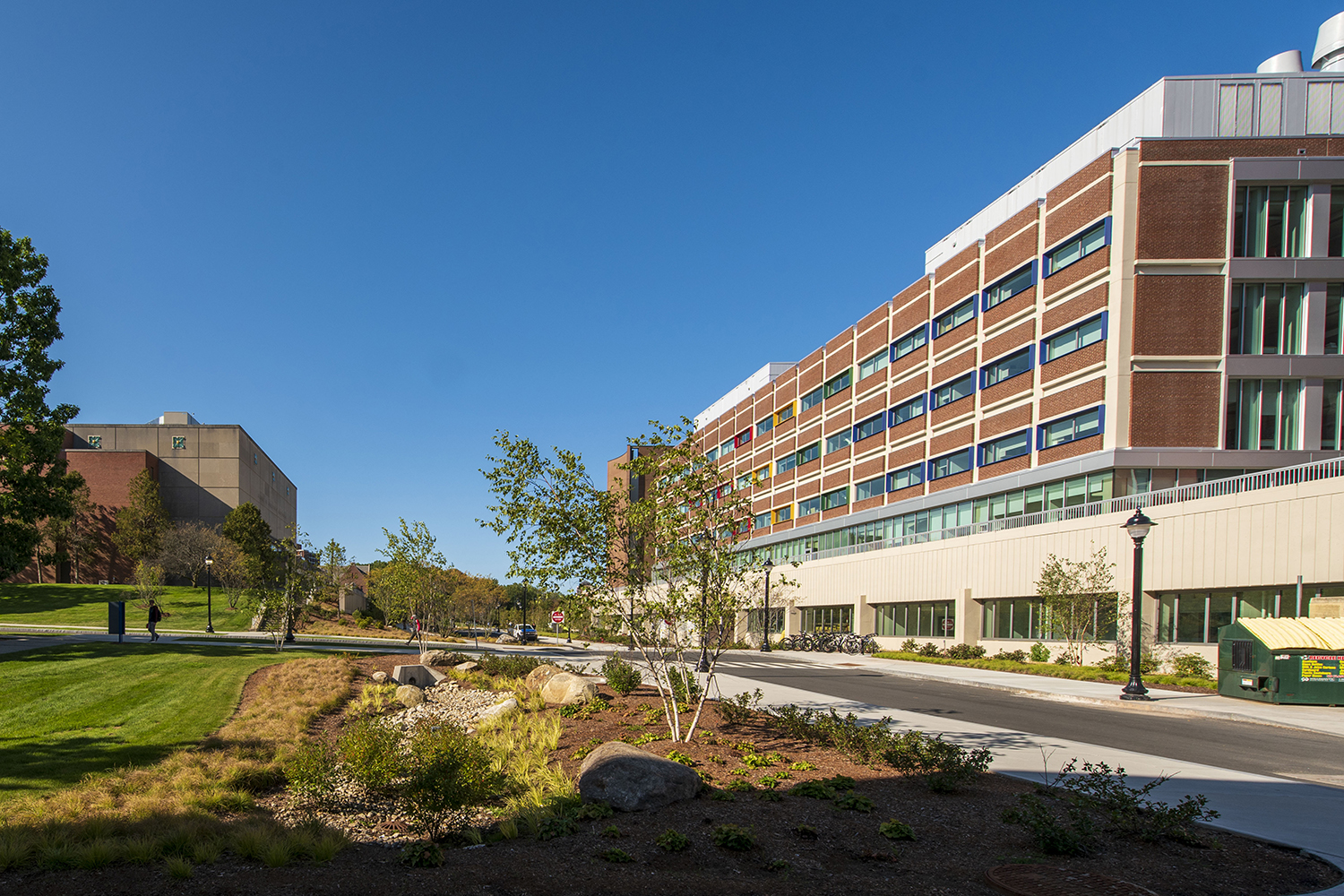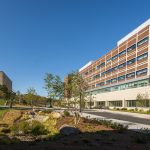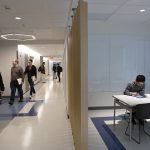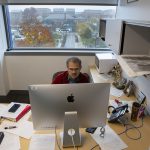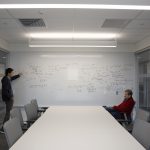A third of the way through its 10-year renovation, the Gant Science Complex is already showing off as a hub for collaborative learning and research in the College of Liberal Arts and Sciences.
Sometimes referred to as the Math-Science Building, the Gant Science Complex was first constructed between 1974 and 1978 and was home to the departments of mathematics and physics for several decades. The renovation to this 285,00 square-foot campus landmark is part of Next Generation Connecticut, the 2013 initiative to expand educational opportunities, research, and innovation in the science, technology, engineering, and math (STEM) disciplines at UConn.
The University is tackling the Gant project in three phases, according to Thomas Haskell, senior project manager in the Office of University Planning, Design, and Construction.
“We want to put science on display and give Gant a fundamentally new image for the campus,” he says.
Phase I of the renovation focused on revitalizing the south wing of the building to meet the needs of the Department of Physics, which relocated from the west wing in August of 2019.
“The new space is critical to the future of our department,” says Barrett Wells, professor and head of the Department of Physics.
The renovated south wing features new state-of-the-art learning laboratories and five scale-up studio classrooms. Using these facilities, the Department rolled out a full suite of redesigned introductory courses for physics, engineering, and biology majors this academic year.
“Our studio-labs have allowed us to completely overhaul how we teach physics, which now centers around teams of students pursuing integrated theoretical and experimental activities,” says Wells. “This is the largest teaching project the Department has taken on for at least 40 years, and it will alter the experience of learning physics for over 1,000 students a year.”
In addition to classrooms and modern offices, the south wing features mixed-use spaces that encourage scholarly and social collaboration. These include four “theory suites,” which group faculty and graduate student offices by research area, and lounge spaces on each floor.
Another amenity nearing competition is a grand “light court” in the center of the Complex. The courtyard will feature floor-to-ceiling windows; a curved, cantilevered staircase; and copious cushioned seating and mixed-use study spaces.
“Around the building there are more meeting rooms and informal places to stop and discuss,” says Wells. “We also have spaces for undergraduate students to congregate, study, and socialize, helping them feel part of the physics family.”
Haskell says that creating a more welcoming environment for undergraduate students was a primary goal for the renovation, as was improving the energy efficiency and performance of the building.
This was no small feat because of the high demands of the faculty research laboratories, according to Haskell.
Some of these labs, which are still under construction, require very specific systems and controls for humidity levels, temperatures, and airflow, says Haskell. The building designers worked closely with the Department’s principal investigators to make sure the space met these standards.
In the end, the hard work will pay off for the Department’s researchers and for the University, says Wells.
“The research labs, once finished, will be state of the art with proper infrastructure for safety, environmental control, and efficient work—the kind of infrastructure we need to attract and retain world-class scientists for our faculty,” he says.
All three phases of the Gant Science Complex renovation project are expected to be completed by 2024. Once finished, the building will also house offices and teaching facilities for the College of Liberal Arts and Sciences biology departments and shared support facilities for the University.
